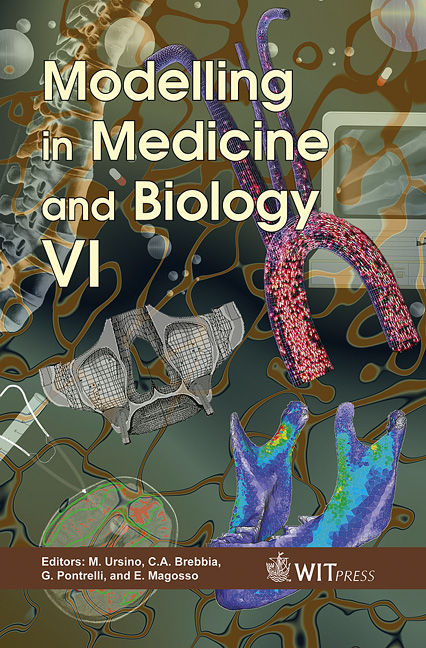A Study For Semi-automatic Diagnosis Support Of Strokes From 2D MRI/FLAIR Sequences
Price
Free (open access)
Transaction
Volume
8
Pages
8
Published
2005
Size
1,568 kb
Paper DOI
10.2495/BIO050531
Copyright
WIT Press
Author(s)
C. Doi, A. Doi, T. Obara, T. Inoue, M. Sasaki & A. Ogawa
Abstract
The MRI/FLAIR sequence is being used for the diagnosis of strokes. The bleeding area shows a high intensity in most cases. However, a doctor must check each image which can take a lot of time. We found that in this process a skilled doctor typically checks the gap area (internal cavity) of the brain to give a diagnosis. This fact is confirmed by a questionnaire of several neuro surgeons. In order to extract the gap area, we utilize a region growing method and a 2D deformable model. We also improve the preciseness by eliminating high intensity areas near the bulb of the brain. Finally, we calculate the degree of riskfactor by counting pixels with high intensity in the gap area. From our experience, we found that the histogram of strokes had a similar pattern, and it could be used for diagnosis of strokes. Finally, we visualize the distribution of the bleeding area of the stroke, and evaluate the results in several ways. Keywords: diagnosis support, stroke, MRI, region growing method, image processing. 1 Introduction Every year a very large number of people suffer from strokes. It is necessary for stroke victims to take an urgent treatment, because the death rate is very high, and the after-effects, such as paralysis of one side of the body, are common. Both CT and MRI are being used for the diagnosis of strokes. A bleeding area in CT and MRI shows high intensity in most cases. However, small cerebral hemorrhage often leads to misdiagnosis, since the area of bleeding is too small, and the intensity in the area is low. This often happens in the emergency hospital where a neuro surgeon is not present. Moreover, a doctor also must check each
Keywords
diagnosis support, stroke, MRI, region growing method, image processing.





